If you want to invoke a classic campy B-movie sci-fi movie feel in your Game Boy project, nothing works better than some 8-bit theremin. You can get a pretty decent sound from the GB Studio tracker but it’s not the easiest thing to implement.
The theremin’s defining characteristic is its glissando and vibrato effects. Basically it’s one long note being manipulated up and down without stopping. When combined with some echo effects, you can emulate the classic atmosphere it created using only two channels. In this article we’re going to take a look at how to achieve this sound using a simple duty channel instrument.
I suggest making your rhythm parts first: drums and bassline (or whatever else your song includes), since the theremin is a bit of a wild card.
Here’s are backing bass and drums:
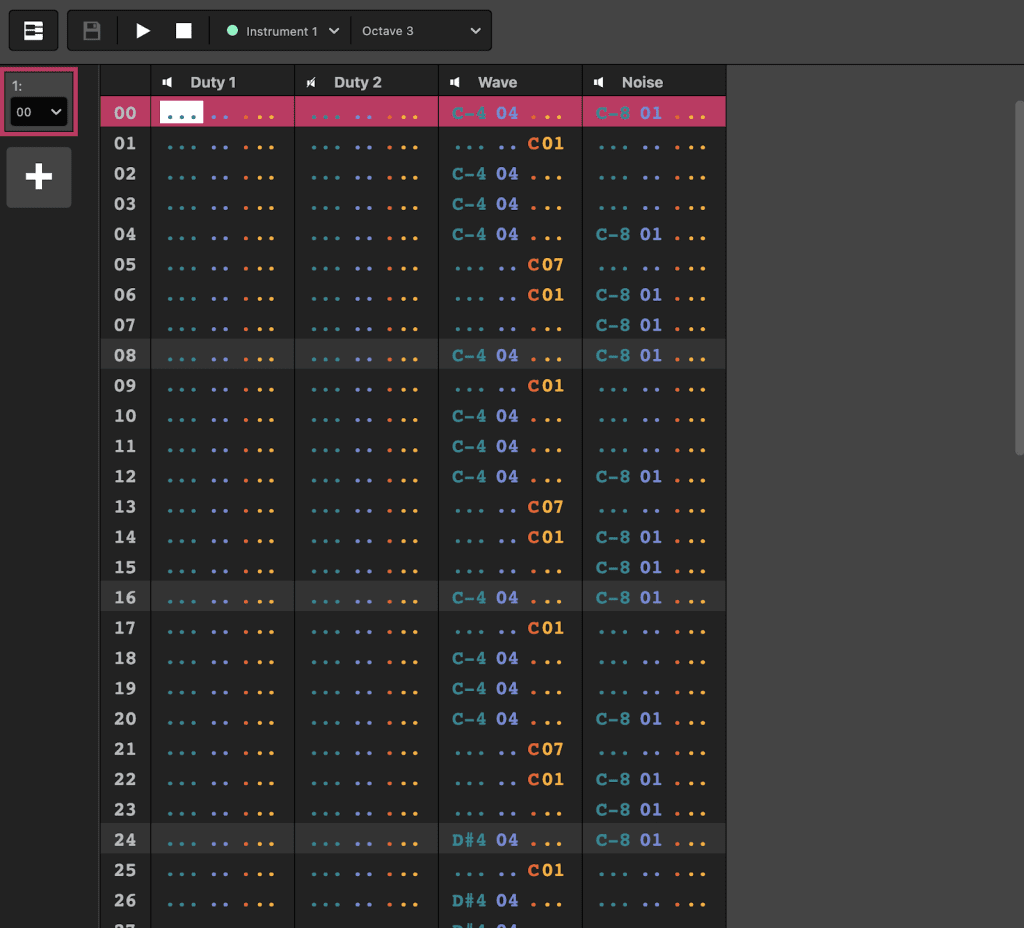
First off, the theremin has a slow attack, meaning when you trigger a note the volume swells up slowly from silence. So set up a 50% duty channel instrument – we’ll call it theremin-main with a long attack as shown here:
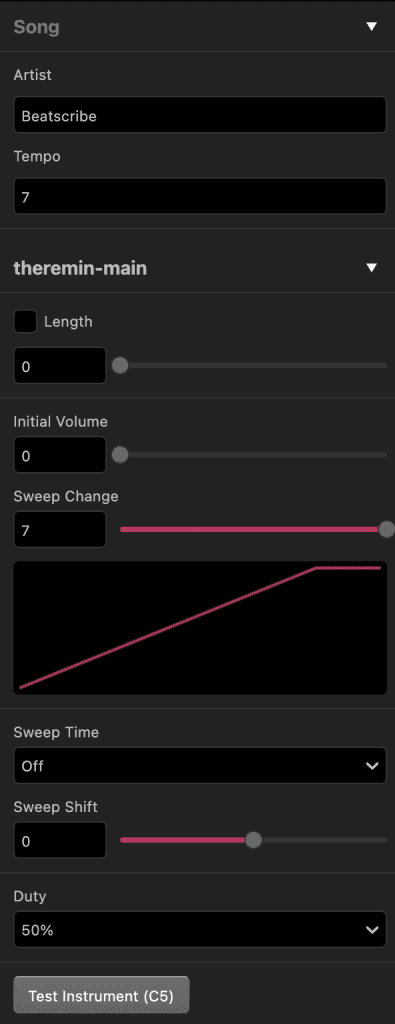
Before we go any further, we should decide the melody we want to play. Because we are going to be pitch-bending a single triggered note drastically, it is best to plan the melody out first. Using any instrument that sustains, set up the melody in duty channel 2. It won’t sound like a theremin yet, but it will act as a guide for making the final product without letting it get way out of tune.
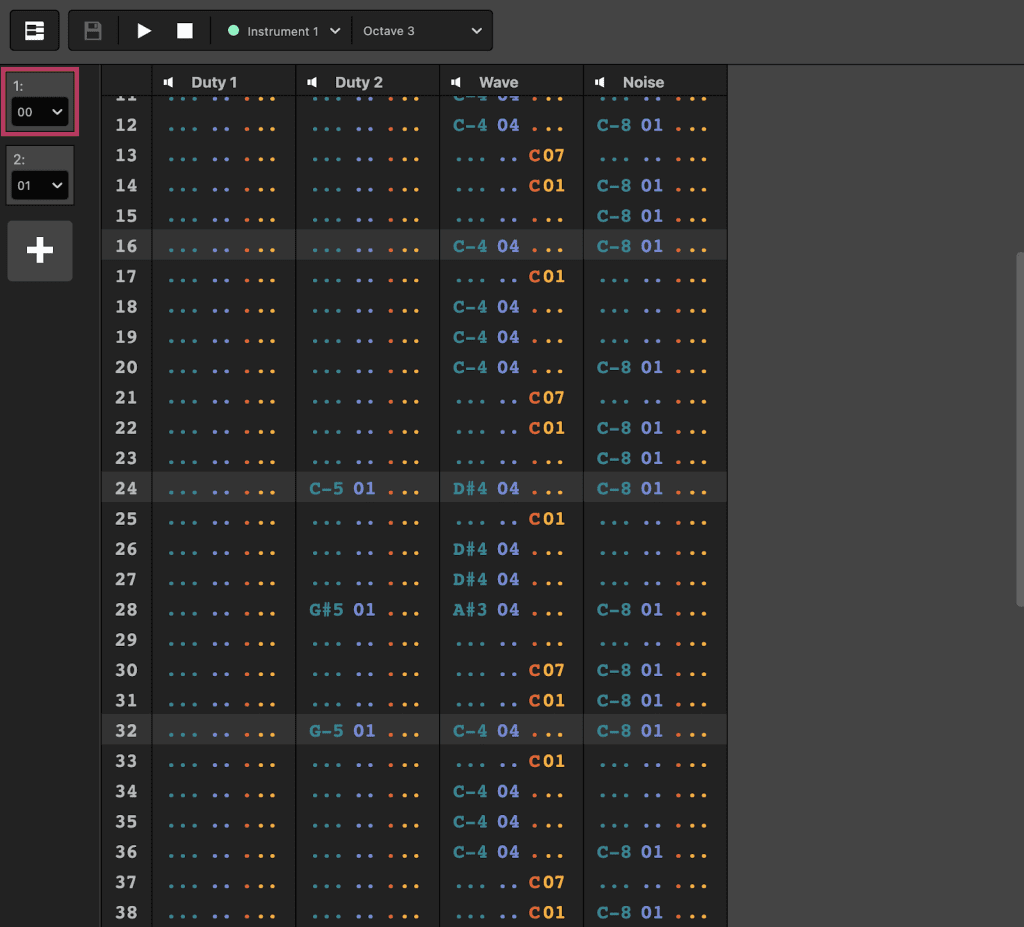
Now that we have our tune, we’re going to set up the theremin in duty channel 1. It’s all about using the 1xx (portamento up) and 2xx (portamento down) effects in small increments to create melodies and vibrato. Our first goal is to bend the starting note (same one playing in duty 2) to match the second note in duty 2. This is why we did duty 2 channel first, otherwise it can be hard to know if you’ve landed on the right note or if you’re slightly out of tune. See the video below which shows some trial and error to get the pitch to the right place to match the second note:
We will do the same to get to the third note. From here, we have a good place to create some vibrato. Usually it sounds natural for the vibrato to start after a note has played for a few clicks. The simple pattern of 201 101 repeated will give a slight wavering to the pitch. You can crank it up to 202 102 for a more wavy pattern, or space out the effects over more clicks to get a slower and smoother vibrato.
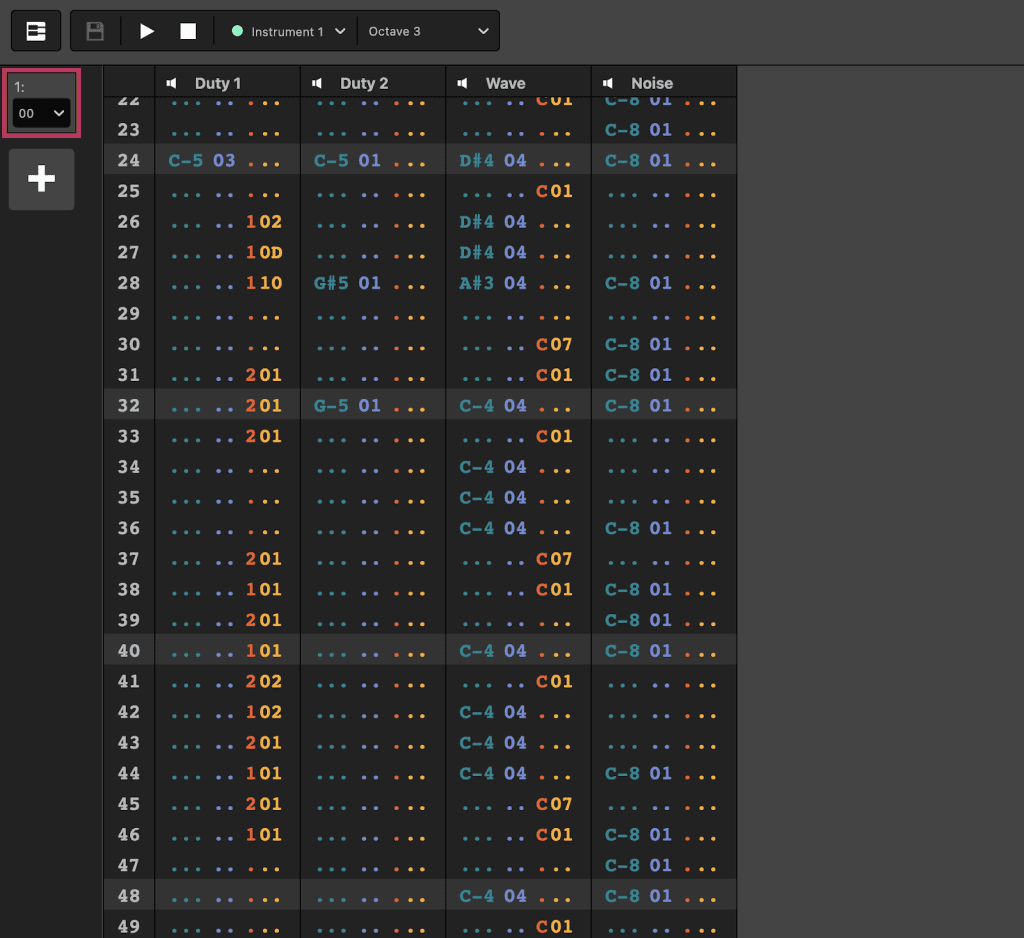
Finally, we need a note to fade away. This is a challenge with all GB songs. If you made a note fade in, you can’t really fade it out without a retrigger. We just have to live with this, but we can do something to make it less noticeable. Make a second instrument that starts at the same volume level of theremin-main but fades to 0. We’ll call it theremin-fade.
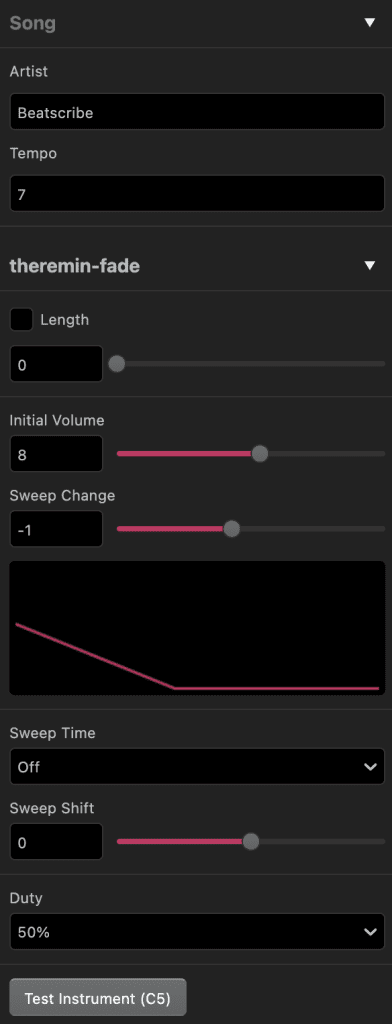
Add this note to the duty 1 channel where you want the fade to begin. There will be a little blip in the sound here. Some options to help minimize it are:
- Set the volume a little lower than the theremin-main instrument
- Change its stereo to make it feel more like a sudden echo
- Put some percussion element on the noise channel at the point you trigger it, which will mask the little hiccup.
- Start pitching it down right away (put a 201 in every tick until it fades away).
I went with option 1, which minimizes the clicks here.
Once you’ve got the theremin created properly, mute duty 2 in order to see how it sounds alone. It is best to have your bassline or supporting notes already laid down to help you detect the theremin drifting too far out of tune.
When you’re happy with the sound, clear duty 2; it served its purpose of keeping us in tune. If you can spare duty 2 for effects, you can make the theremin sound even better with a simple echo. Simply copy your pattern from duty 1 and paste it into duty 2 one or two clicks down. Throw a C07 (just a suggestion, you can experiment with the value from C01 to C0E for volume of echo) on the first note. You can even set the duty 2 channel to one of the stereo channels using a 8xx effect in one of the other channels. Another flavor option is to use a separate 12% duty instrument for the echo, which gives it a more reverb-like quality.
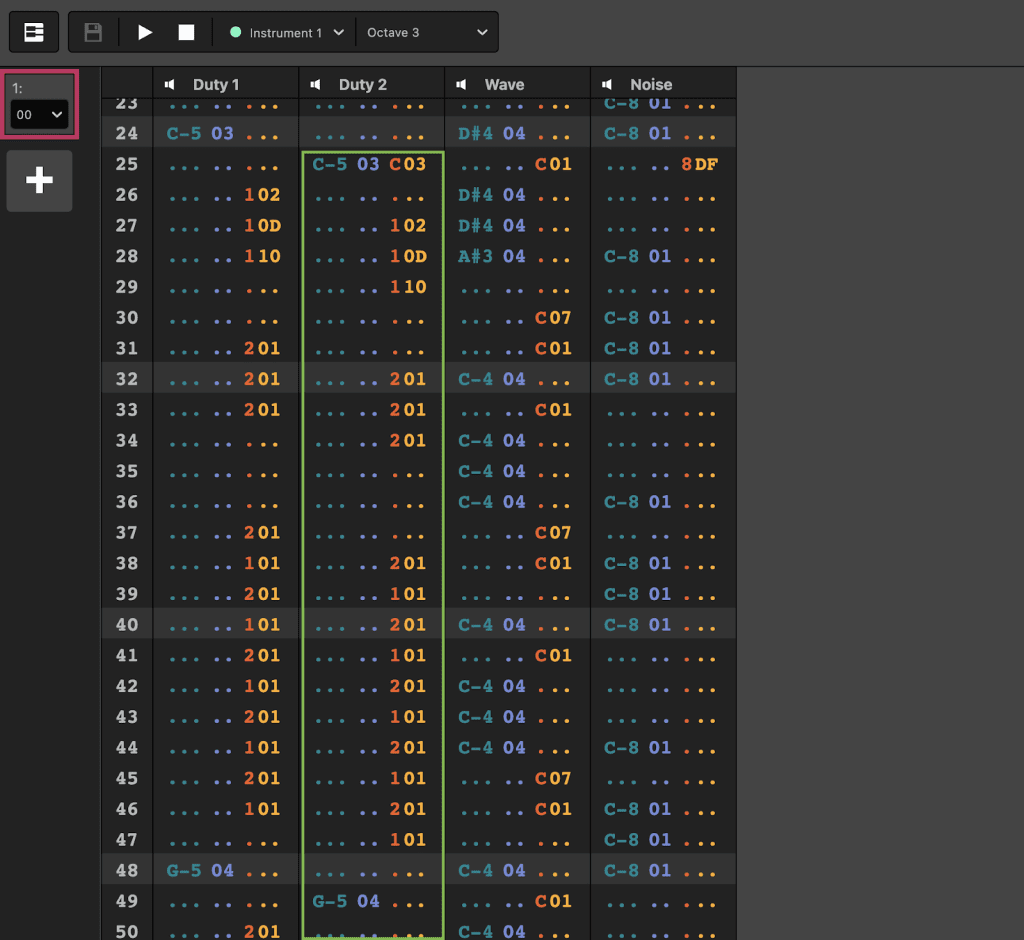
Using the same techniques with a 75% duty instrument can also give you a more opera singer-like flavor.
Now hit play and see how it sounds!
That was a lot of work for a few seconds of music, but the mood and sound are there! Try it out and see what melodies you can build with this technique.

Beatscribe has composed and produced soundtracks for games on Nintendo DS, Nintendo Switch, PS4, Xbox1, Sega Genesis and numerous iOs and Android games for over a decade, but his true passion is creating epic moods on ancient hardware like the Game Boy and NES.

